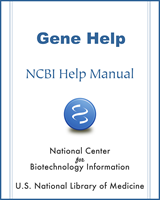alive
discontinued
replaced | The alive property is set when the record is current and primary (i.e., not secondary or discontinued). The term secondary is applied to any record that has been merged into another. This occurs most often when multiple genes are defined based on incomplete data, and these are later discovered to be parts of the same gene. One gene record then becomes secondary to the other.
The discontinued property is set when the record is no longer current, and it has not been made secondary to any other gene record.
The replaced property is set when the record is no longer current because it has been made secondary to another gene record. |
| annotated gene | A gene that is annotated on RefSeq chromosome or contig accessions. |
| expression category ubiquitous expression | A gene that is expressed in all samples. |
| expression category broad expression | A gene that is expressed in >=50% of samples. |
| expression category restricted expression | A gene that is expressed in more than 1 and less than 50% of samples. |
| expression category biased expression | A gene that is expressed in only 1 sample of the primary dataset. |
| expression category low expression | A gene that is not expressed above 1.0 RPKM in any sample. |
| generif | A record having one or more GeneRIF annotations attached. |
| has ccds | A gene that encodes a protein sequence that is a member of the Consensus CDS (CCDS) set. See http://www.ncbi.nlm.nih.gov/projects/CCDS/. |
| has expression data | A record having associated expression data. |
| has lrg | A record having an associated gene-specific genomic Locus Reference Genomic (LRG) sequence. |
| has ortholog | A gene identified by the annotation pipeline as having orthologs |
| has pseudogene | A record with one or more related pseudogene records. |
| has refseqgene | A record having an associated gene-specific genomic RefSeq in the RefSeqGene class. |
| has summary | A record with summary text (gene.summary) |
| has transcript variants | A record having two or more associated RefSeq transcripts, i.e., splice variants. Note: This is limited to RefSeq annotation and should not be used to identify all genes exhibiting alternative splicing, promoter usage, and/or polyadenylation signals. |
hiv1 protein interactions
hiv1 replication interactions
hiv1 interactions | Genes with curated HIV-1:human protein interaction data. See http://www.ncbi.nlm.nih.gov/RefSeq/HIVInteractions/index.html.
Genes with curated HIV-1:human replication interaction data. Data is from https://southernresearch.org/.
Genes with either curated HIV-1:human protein interaction data or curated HIV-1:human replication interaction data. |
| interaction | A record with data in the Interaction section. |
| matches ensembl | A record that matches Ensembl annotation based on comparison of mRNA and protein features. Both the mRNA and protein must meet the matching criteria. If there are multiple possible matches, only the best is reported. Matches are determined as follows:
For all organisms, for a protein to be identified as a match between RefSeq and Ensembl, there must be at least 80% overlap between the two, and either 60% or more of the splice sites match or there is at most one splice site mismatch.
For non-coding transcripts, the RefSeq and Ensembl transcript features must meet a minimum overlap threshold of 50% and either 60% or more of the splice sites match or there is at most one splice site mismatch. |
| officially named | A record with official nomenclature. |
| phenotype | A record including a named phenotype. |
| phenotype only | A record for a mapped phenotypic trait for which the molecular basis in not known. |
readthrough
readthrough child
readthrough parent | A gene that is sometimes transcribed with another gene.
The readthrough property will find any gene in a readthrough relationship. The other two properties will find only child or parent genes in a readthrough relationship, respectively. |
